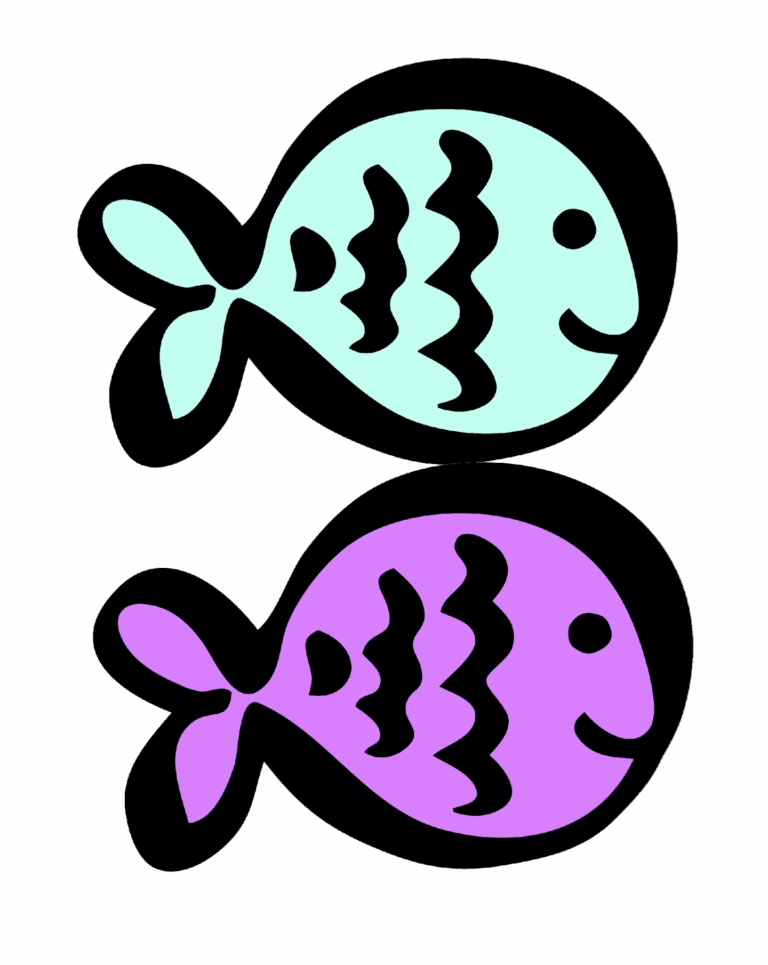STEAM Challenge: Fish Tessellation
By rmelody
06 June, 2025

STEAM Challenge: Fish Tessellation: Create a repeating pattern of fish that tessellates—meaning the shapes fit together perfectly without gaps or overlaps.
Materials:
- Construction paper (various colors)
- Scissors
- Tape or glue
- Pencil
- Ruler (optional)
Instructions:
- Create a Base Shape
- Start with a square piece of construction paper.
- Draw a simple fish shape that fits within the square’s dimensions (you can begin with a basic outline and refine it).
- Transform the Shape for Tessellation
- Cut a small section from one side of the square (e.g., a fin or tail shape).
- Tape the cut piece to the opposite side to maintain symmetry.
- Repeat the Process
- Continue modifying the fish shape by cutting and shifting different parts while ensuring it can interlock when repeated.
- Trace and Arrange
- Once satisfied with your final fish tessellation shape, use it as a stencil.
- Trace the shape onto multiple construction paper pieces, cutting out several identical fish.
- Assemble the Tessellation
- Arrange the fish pieces on a larger background sheet so they fit together without gaps.
- Tape or glue them down to form a continuous pattern.
- Enhance Your Design
- Add details like eyes, scales, or patterns using markers or more cut-out paper pieces.
- Experiment with different color arrangements for a creative touch.
Mathematical Foundations of Tessellations:
Tessellations are deeply rooted in mathematics, particularly in geometry. They involve the study of how shapes fit together without gaps or overlaps, demonstrating fundamental principles of symmetry, transformations, and spatial reasoning.
- Geometry & Shapes
- Tessellations rely on polygon properties, where shapes like triangles, squares, and hexagons can seamlessly repeat.
- Regular tessellations use only one type of shape, while semi-regular tessellations combine different polygons.
- Symmetry & Transformations
- Tessellations showcase rigid motions—translation (sliding), rotation (turning), and reflection (flipping)—to create repeating patterns.
- These principles are used in fields like crystallography and art design.
- Tilings & Mathematical Proofs
- Mathematicians study which polygons tessellate efficiently and develop theorems to categorize possible tessellations.
- For example, only three regular polygons tessellate: equilateral triangles, squares, and hexagons.
- Fractals & Advanced Applications
- Some tessellations involve fractals, where smaller versions of a shape repeat indefinitely, seen in nature (e.g., snowflakes).
- This ties into advanced mathematical concepts like recursion and infinite patterns.
Real-World Connections:
- Nature’s Efficiency
- Honeycombs: Bees use hexagonal tessellations to maximize space and minimize material use when constructing hives.
- Turtle Shells & Pineapple Skin: Naturally occurring tessellations provide strength and flexibility in biological structures.
- Architecture & Design
- Mosaic Tiles & Pavements: Tessellations allow seamless, decorative flooring and walls without gaps.
- Islamic Art & Stained Glass Windows: Many historical designs rely on tessellations for intricate symmetry and visual harmony.
- Roofing & Brickwork: Interlocking shapes provide stability and reduce wasted material.
- Engineering & Technology
- Computer Graphics & Game Design: Tessellations help render images efficiently, ensuring smooth textures without visible seams.
- Structural Engineering: Triangular tessellations strengthen bridges, domes, and geodesic structures by evenly distributing forces.
- Spacecraft Heat Shields: NASA uses tessellated tiles to protect spacecraft from intense heat during atmospheric re-entry.
- Mathematics & Science
- Crystallography: Atomic structures form repeating tessellations, influencing material properties.
- Artificial Intelligence & Image Processing: Algorithms use tessellations to enhance image recognition and compression.
Hint: An easy way to get started is to use sticky notes, especially the square ones.
Standards Alignment: CCSM: G: Reason with shapes and their attributes.

